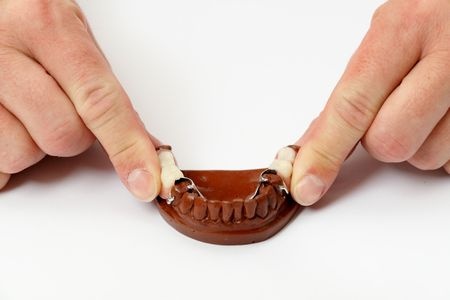Dentures and Bridges

Dentures are bridges are restorative procedures meant to replace teeth loss. One or more missing teeth can adversely affect the appearance and functionality of your smile. Missing teeth can also cause a change in occlusion (bite), shifting of the teeth, temporomandibular joint disorder (TMJ), speech impediments, an increased risk for periodontal (gum) disease and a greater chance of tooth decay.
What are the differences between dentures and bridges?
Their purpose is to replace teeth loss but it is important to know what advantages has each dental restoration.
A bridge is appropriate when there are several teeth remaining (or implanted) in the mouth cavity and the gaps between them are not too large. The teeth located at the border of the gap will serve as support for the future bridge and will be covered by crowns. The dental laboratory fabricates all the items needed and the dentist bonds the crowns to the remaining teeth. The bridge that restores the aspect of the natural teeth can be found between those two crowns. What the patient should know is that the bridges are fixed dental restorations so he or she does not have to remove them for cleaning.
Removable dentures are restorations supported by the surrounding tissues of the oral cavity. They are used when there are no left teeth on the arch. The dentist takes the impression of the mouth cavity, sends it to the dental laboratory where the technicians fill the gaps and restore the morphology of every tooth. While waiting for the denture to be bonded, the laboratory provides a provisory arcade meant to recreate the harmony of the mouth and the entire face. In the end, the dentist makes any adjustment needed and fixes the denture by clasping or bonding it using provisory resins.
The ill effects of not applying bridges or dentures can be a shift in remaining teeth and gingiva, an inability to bite and chew properly, as well as a sagging facial appearance which makes one appear older than he or she is.
